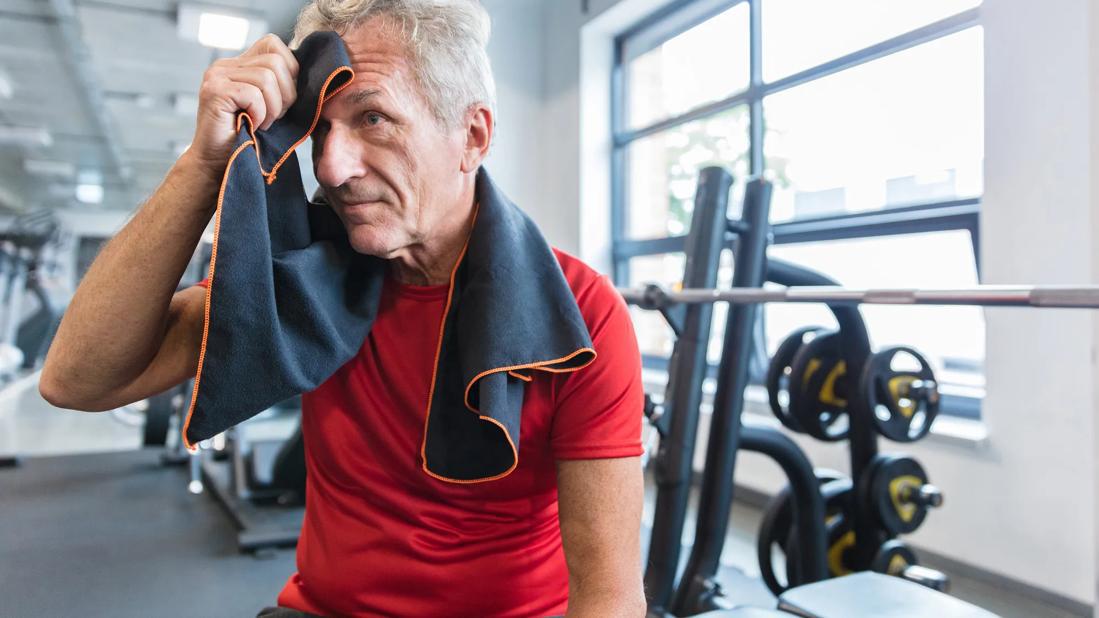Here’s What Helps Sore Muscles After a Workout
Hydration, nutrition and athletic guidance can help, but so can massage, Epsom salt baths and more

Soreness after a workout can be troublesome, especially if you’re worried it may be a sign of injury. If you’re dealing with a low-level dull soreness that gets better with rest or physical activity, sports medicine physician Dominic King, DO, says there are some things you can do at home to alleviate your pain and help your muscles recover more efficiently.
What helps sore muscles after a workout?
Feeling sore after a workout is unavoidable if you’re faced with the right amount of challenges during your exercises. But here are eight things you can do to help relieve soreness along the way.
1. Hydration
Drinking plenty of water is important for muscle recovery. But when you’re pushing yourself, you also have the ability to sweat out a lot of the water you consume. Make sure you follow daily recommendations for water, but also consider drinking more on the days you hit the gym.
2. Stretching and cooling down
A 10- to 15-minute warm-up before working out and a 10- to 15-minute cool-down after exercising is key for avoiding injury and allowing your muscles to ramp up and recover efficiently. Start by stretching your muscles and doing some simple aerobic exercises before lifting weights. End your routines with stretching and a slow, comfortable walk until your heart rate returns to normal.
3. Active recovery
The cornerstone of treating muscle soreness is rest, but it’s also important to move and maintain your range of motion as much as possible. Applying ice and heat can definitely help, but Dr. King cautions against using anti-inflammatory medications for too long.
“Inflammation is your body’s way of healing injuries, so you may not want to halt that inflammation entirely,” he clarifies. “If you have to ice often or take medications frequently, this may indicate an unacceptable type of soreness that should be evaluated by a physician.”
If anything, you should pause a physical activity if you feel sudden, sharp pain that makes that activity difficult to do. But if your pain is a two or three on a scale of 10, you can always rely on lighter exercises to keep your muscles fluid even as they recover.
4. Intentional progression
Start your workout at a very low intensity and duration and slowly ramp up your time and effort to build strength and endurance. Remember: Muscle-building takes time and your muscles need a weeks-long education in order to maximize their growth.
“If your daily job and daily activities don’t involve flipping tires and pulling large ropes, then that’s probably not how you should start out with an exercise program,” Dr. King cautions.
“Instead, focus on building a strong foundation — one step, one workout, one small victory at a time. Progress isn’t about extremes; it’s about consistency, patience and believing in your ability to grow stronger every day. Give yourself the time and grace to reach your fitness goals, and you’ll be amazed at what you can achieve.”
5. Massage
If a specific spot is feeling sore after a workout, massage therapy could help alleviate the immediate soreness and improve the recovery rate of your muscles. Try a trigger point massage for pinpoint soreness or a massage gun right after a workout. When massaging the area, you shouldn’t feel any additional pain or worsening symptoms. If you do, stop the massage, rest the muscle and make an appointment with your healthcare provider in case of injury.
6. Epsom salt baths
Although scientific research is slim, years of personal testimony swear by the integrative medicine technique of using Epsom salt baths for mental and physical relief. When taken in the first few hours after a workout, it could be a solution for relieving muscle tension and soreness.
7. Pre- and post-workout nutrition
What you eat matters, especially when you’re exercising or strength training. Before working out, make sure you eat enough protein to maximize your muscle recovery. If you’re in a hurry or short on supply, having an occasional protein shake an hour before your exercise could help your muscles recover faster in the long run. Otherwise, you’ll want to make sure you’re eating a healthy well-rounded diet that includes carbs, healthy fats, fruits and vegetables with at least three meals a day. Doing so provides your body with the energy to last through a workout while reducing your risks for soreness and injury.
8. Working with an athletic or personal trainer
You know your body more than anyone. If something doesn’t feel right or you’re hesitant to exercise while experiencing soreness, you should make an appointment with a healthcare provider. Athletic trainers, sports medicine physicians and physical therapists can work with you at varying levels to help make sure you’re following the right forms and techniques and ensure your recovery from injury goes smoothly. Even personal trainers can provide exercise plans specific to your needs and goals.